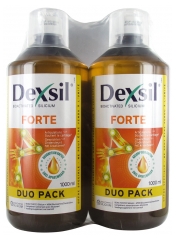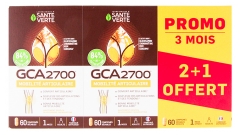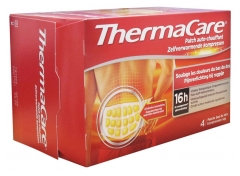Rheumatism:
one word for many ailments
Written by Paul Musset, Doctor in Pharmacy | published on | updated on 15/04/2024

The word “rheumatism” is well known, since one-third of people of all ages are affected by this problem. However, the definition of rheumatism remains rather general: medically speaking, it is not a specific disease, but more than 200 diseases of various origins and manifestations. How can they be recognised and their symptoms relieved?
Degenerative rheumatism
Rheumatism affects the joints and their peripheral structure (tendons, ligaments, muscles). It takes various forms depending on its location, symptoms, severity, or the age of the patient. There are four main types of rheumatism:
- Bone rheumatism
- Abarticular rheumatism (affecting the soft tissue around the joint)
- Inflammatory rheumatism
- Degenerative rheumatism
Among the latter, osteoarthritis, one of the most common types of rheumatism, results from the wear and tear of cartilage, the tissue that covers the ends of bones. This very common disease affects nearly 9 million people in the UK. While the elderly are the primary affected population, the disease can occur at any age following repeated trauma, fragility or excessive stress on the joints (excess bodyweight, top-level athlete, etc.). It affects 47% of people under the age of 60; one in three patients is under the age of 40.
Inflammatory rheumatism
When pain is caused by inflammation that damages the joints, it is called inflammatory rheumatism or arthritis. Depending on its causes and form, the disease can be chronic or acute and can affect several joints. Inflammatory rheumatism usually has genetic or environmental origins and can be caused by an autoimmune reaction to a viral or bacterial infection.
- This is the case of rheumatoid arthritis, the most common chronic rheumatic disease in adults (1 to 3% of the UK population, a majority of whom are women). This rheumatism mainly affects the hands and feet.
- Spondylitis, identified by pain and stiffness in the spine and pelvis, is also worth mentioning.
- Psoriatic rheumatoid arthritis is characterised by severe fatigue and inflammatory pain associated with psoriasis.
- And then there is gout, which occurs as a result of an acute attack caused by the formation of crystals in a joint, usually the big toe.
Other types of rheumatism
When pain occurs in the areas around the joint, i.e. the tendons, ligaments, muscles and other soft tissues, it is called abarticular rheumatism. Most of the time, the patient experiences continuous muscle pain. This is the case of fibromyalgia, which is very common, especially in women between the ages of 50 and 60. This disease is caused in particular by a nervous system disorder.
Other rheumatic diseases affect the bone structure. These are known as bone rheumatism, the most well-known example being osteoporosis. This pathology causes the bone mass to deteriorate, increasing the risk of fracture. Women between the ages of 45 and 50 are particularly prone to it due to hormonal deficiencies caused by menopause.
How does rheumatism manifest itself?
All rheumatism results in joint or periarticular pain. Other symptoms vary depending on the pathology.
For example, patients with osteoarthritis complain of stiffness or numbness in the limbs, especially when they wake up.
People with inflammatory rheumatic diseases, such as gout, experience swelling or redness of the joints. They often wake up at night due to the pain.
Other symptoms include sensitivity to pressure, cracking, diffuse pain, skin manifestations such as psoriasis (psoriatic rheumatoid arthritis), difficulty sleeping and anxiety (fibromyalgia), fever (acute rheumatic fever), deformities (rheumatoid arthritis). Manifestations can sometimes be very disabling.
Diagnosis and drug treatments
Any unexplained joint pain or functional discomfort should be discussed with a doctor. Doctors make a diagnosis based on the patient’s statements (frequency and type of pain, circumstances, history, etc.) and a clinical examination.
This examination may be supplemented by:
- Imaging (radio, CT, MRI, scintigraphy or ultrasound) to determine the condition of the joints
- A blood test to detect the presence of antibodies and confirm the presence of inflammation
- A puncture of the joint fluid to look for any crystals or bacteria
Drug treatment depends on the type of rheumatism. It comprises analgesics to relieve pain as well as the prescription of anti-inflammatory drugs or even corticosteroids in the case of inflammatory rheumatism, antibiotics to treat rheumatic diseases of bacterial origin, or hormonal drugs to stop the destruction of bone in the case of osteoporosis.
There are specific disease-modifying treatments to slow the progression of certain pathologies. Finally, surgery is sometimes necessary to repair or replace a joint that is too severely affected by osteoarthritis.
Natural ways to prevent and relieve rheumatism
Non-medicinal management also helps improve the lives of affected patients:
- Food supplements are very effective in restoring flexibility to the joints and preserving their structure.
- Analgesic and anti-inflammatory essential oils can be rubbed on affected areas to soothe pain, prevent gout flare-ups, or slow the progression of osteoarthritis.
- Patches are an easy solution to relieve rheumatism: heat is beneficial for pain and stiffness; cold is useful for inflammation.
Furthermore, osteopathy and physiotherapy are excellent allies. Muscle strengthening, joint manipulation and mobilisation improve patients’ daily comfort.
In any case, to limit acute flare-ups and relieve the chronic pain of rheumatism, simple and effective preventive measures should be established:
- Adopt a healthy lifestyle (avoid smoking, do not abuse alcohol and caffeine, sleep, and drink enough fluids).
- Focus on foods rich in antioxidants (fruits, fresh and dried vegetables, fish, etc.) and limit the intake of animal proteins and dairy products.
- Move and exercise regularly, but moderately (avoid impact sports that create trauma or sports with excessive repetitive movements).
- Avoid being overweight, which aggravates rheumatic symptoms.
- Wear comfortable shoes on a daily basis as well as shoes that suit your athletic activities.
- Maintain good posture when moving, as well as when resting.
Rheumatic diseases are diverse and varied, as are the methods to relieve symptoms. If you choose gentle and natural methods, Cocooncenter will be at your side to advise you.






















